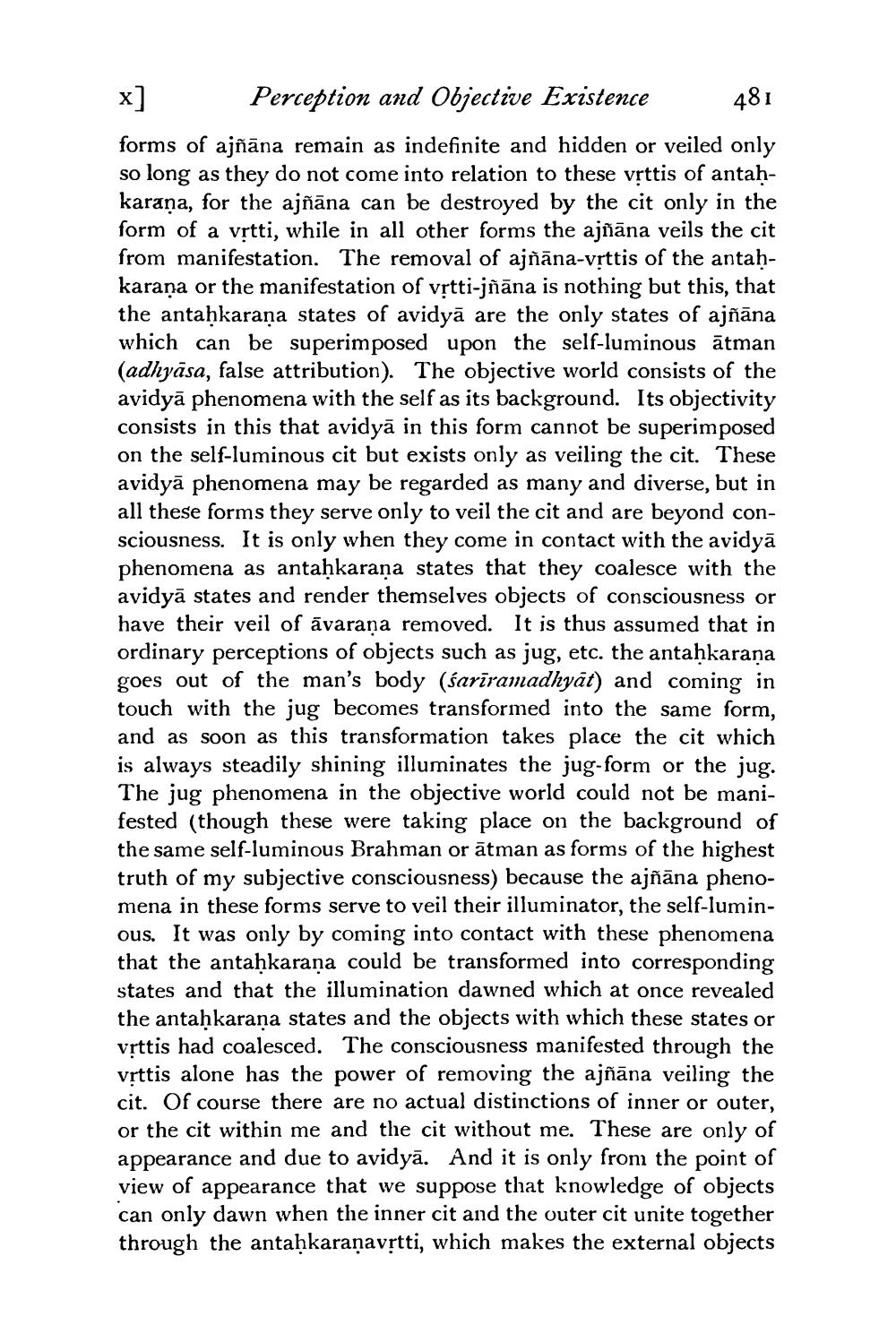________________
x]
Perception and Objective Existence
481
forms of ajñāna remain as indefinite and hidden or veiled only so long as they do not come into relation to these vṛttis of antaḥkaraṇa, for the ajñāna can be destroyed by the cit only in the form of a vṛtti, while in all other forms the ajñāna veils the cit from manifestation. The removal of ajñāna-vṛttis of the antaḥkarana or the manifestation of vṛtti-jñāna is nothing but this, that the antaḥkaraṇa states of avidya are the only states of ajñāna which can be superimposed upon the self-luminous ātman (adhyāsa, false attribution). The objective world consists of the avidyā phenomena with the self as its background. Its objectivity consists in this that avidyā in this form cannot be superimposed on the self-luminous cit but exists only as veiling the cit. These avidyā phenomena may be regarded as many and diverse, but in all these forms they serve only to veil the cit and are beyond consciousness. It is only when they come in contact with the avidyā phenomena as antaḥkarana states that they coalesce with the avidyā states and render themselves objects of consciousness or have their veil of avaraṇa removed. It is thus assumed that in ordinary perceptions of objects such as jug, etc. the antaḥkarana goes out of the man's body (śarīramadhyāt) and coming in touch with the jug becomes transformed into the same form, and as soon as this transformation takes place the cit which is always steadily shining illuminates the jug-form or the jug. The jug phenomena in the objective world could not be manifested (though these were taking place on the background of the same self-luminous Brahman or ātman as forms of the highest truth of my subjective consciousness) because the ajñāna phenomena in these forms serve to veil their illuminator, the self-luminous. It was only by coming into contact with these phenomena that the antaḥkaraṇa could be transformed into corresponding states and that the illumination dawned which at once revealed the antaḥkaraṇa states and the objects with which these states or vṛttis had coalesced. The consciousness manifested through the vṛttis alone has the power of removing the ajñāna veiling the cit. Of course there are no actual distinctions of inner or outer, or the cit within me and the cit without me. These are only of appearance and due to avidyā. And it is only from the point of view of appearance that we suppose that knowledge of objects can only dawn when the inner cit and the outer cit unite together through the antaḥkaranavṛtti, which makes the external objects




